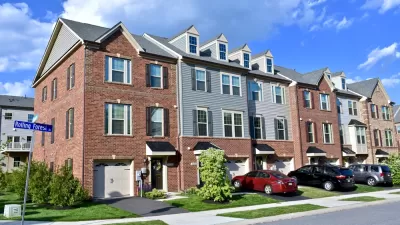Though owning a home may be easier today than during the housing bubble due to lower interest rates and prices, in many cities across the U.S. the middle class is widely excluded from homeownership. Trulia crunches the numbers.
"For the middle class today, homeownership is well within reach in some parts of the country, but in others, it’s more of a pipe dream than the American Dream," writes Jed Kolko, Trulia's chief economist. "Even after taking income differences into account, homeownership affordability varies hugely across the country."
To determine middle class affordability across the country, Kolko and his colleagues examined what percent of the housing market in a metro area is within reach of a household earning the area's median income. What they found will be heartening to those looking to live in the Midwest, and discouraging to those who would prefer San Francisco, Los Angeles, or New York.
"In Akron, OH – the most affordable of the 100 largest metros – 86% of the homes for sale are within reach of the typical household," notes Kolko. "Including Akron, the six most affordable metros are in Ohio (Dayton, Toledo, Cincinnati) and Indiana (Gary, Indianapolis)."
"The least affordable housing market in the U.S. is San Francisco," he adds. "Even though the median household income is 60% higher in San Francisco than in Akron – which means San Franciscans can afford more expensive homes – the median price per square foot in San Francisco is close to seven times higher than in Akron. As a result, just 14% of the homes for sale in San Francisco are within reach of its relatively well-paid middle class."
FULL STORY: Where Can the Middle Class Afford to Buy a Home?

Planetizen Federal Action Tracker
A weekly monitor of how Trump’s orders and actions are impacting planners and planning in America.

Maui's Vacation Rental Debate Turns Ugly
Verbal attacks, misinformation campaigns and fistfights plague a high-stakes debate to convert thousands of vacation rentals into long-term housing.

Restaurant Patios Were a Pandemic Win — Why Were They so Hard to Keep?
Social distancing requirements and changes in travel patterns prompted cities to pilot new uses for street and sidewalk space. Then it got complicated.

In California Battle of Housing vs. Environment, Housing Just Won
A new state law significantly limits the power of CEQA, an environmental review law that served as a powerful tool for blocking new development.

Boulder Eliminates Parking Minimums Citywide
Officials estimate the cost of building a single underground parking space at up to $100,000.

Orange County, Florida Adopts Largest US “Sprawl Repair” Code
The ‘Orange Code’ seeks to rectify decades of sprawl-inducing, car-oriented development.
Urban Design for Planners 1: Software Tools
This six-course series explores essential urban design concepts using open source software and equips planners with the tools they need to participate fully in the urban design process.
Planning for Universal Design
Learn the tools for implementing Universal Design in planning regulations.
Heyer Gruel & Associates PA
JM Goldson LLC
Custer County Colorado
City of Camden Redevelopment Agency
City of Astoria
Transportation Research & Education Center (TREC) at Portland State University
Jefferson Parish Government
Camden Redevelopment Agency
City of Claremont




























